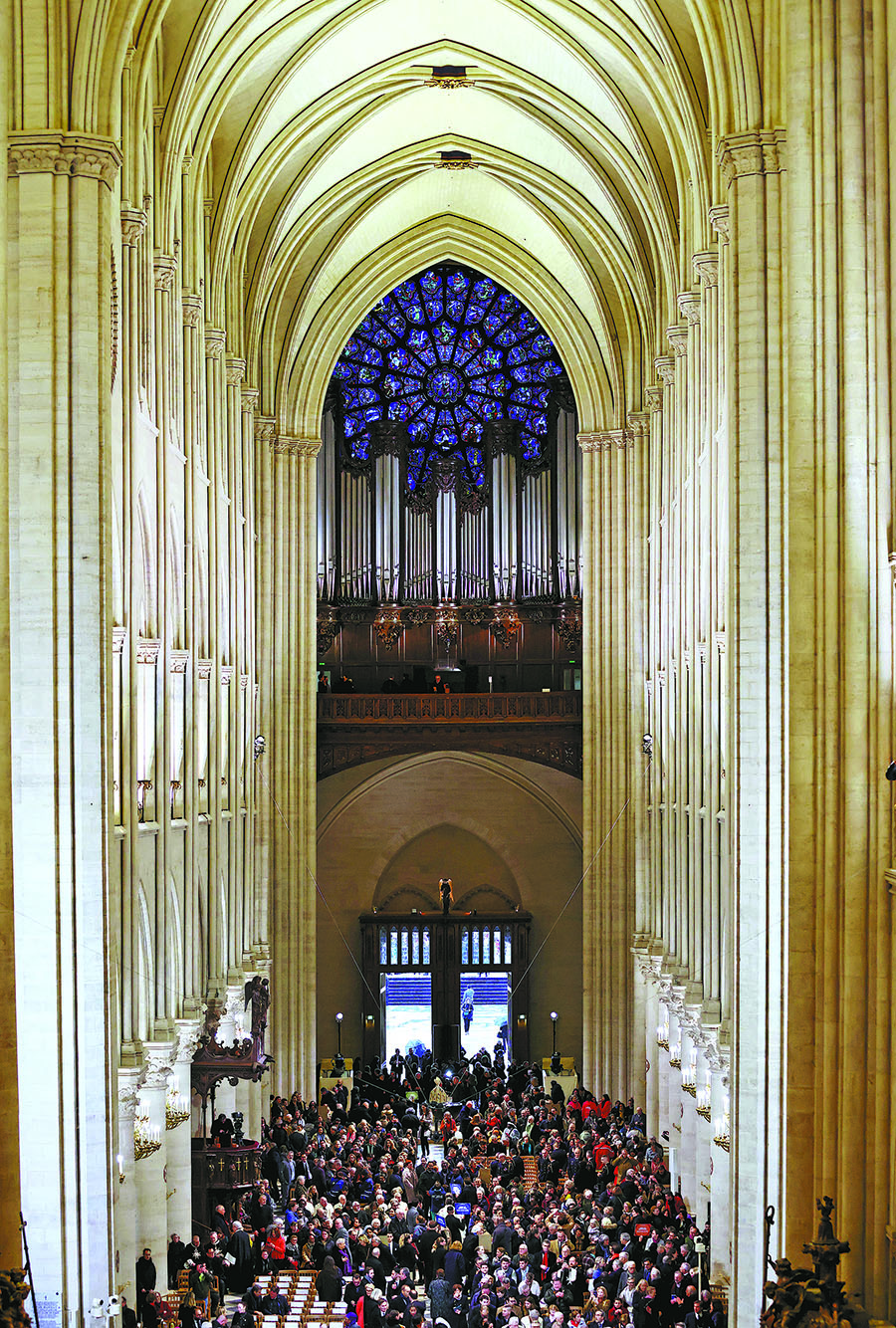Explore Paris from Notre Dame reborn


Inside, the transformation is no less impressive.
Centuries of candle smoke and dust were gently cleaned from the stone walls. The stained-glass windows, including the magnificent rose windows, were carefully removed, restored, and replaced. The result is a brilliance of light that floods the nave, illuminating intricate stone carvings, restored paintings, and a new bronze altar.
A new reliquary for the Crown of Thorns, one of the cathedral's most sacred items, now sits in a quiet side chapel designed by modern artists with deep respect for tradition.
The cathedral is once again a place of worship and has become a symbol of resilience. Its reopening was marked by a powerful Mass attended by government leaders, global religious figures, and thousands of Parisians who had followed the reconstruction closely. Up to 30,000 visitors pass through its doors each day, many moved to tears by its resplendence.
Notre Dame has always been a mirror of Paris. Its walls have witnessed royal coronations, revolutionary battles, and quiet prayers. Its bells have rung out in celebration and mourning alike. And now, after a period of silence and scaffolding, it rings with life as it once did. But the journey through Paris does not stop at the cathedral's doors. It begins there.
To understand Notre Dame is to understand Paris itself. As with much in the city, it has endured layers of history — revolution, restoration, renewal. It connects generations, linking the medieval with the modern. As the cathedral rises from the ashes, it sets the tone for a city constantly balancing its past and present.
Even the smallest features of Notre Dame tell stories. The gargoyles that peer out over the city were never merely decorative; they were meant to guard against evil and to channel rainwater away from the stone. The bells, including the great Emmanuel bell in the south tower, are sounded only on major occasions. Above the newly restored and re-tuned grand organ, the Gallery of Kings reminds visitors of the cathedral's integral role in national identity.
Notre Dame's importance is more than architectural or historical. It is emotional. It has become a ubiquitous part of Parisian life — a space for reflection, celebration, mourning, and unity. For many, returning to Notre Dame is not just a tourist experience but a homecoming.
Sacred stones, streets
As visitors leave Notre Dame and step onto the stone pavements of the island where it stands, the city stretches out before them in all directions. The Seine River winds through its heart, connecting different faces of Paris like pages in a novel. Following the water offers a gentle introduction to the city's variety.
Crossing the bridge to the south bank, travelers soon find themselves in the Latin Quarter, once home to students and philosophers. Although the University of Paris no longer dominates the area as it once did, the bookshops, quiet gardens, and narrow alleys still echo with ideas and art. A few streets away, the shadow of the Pantheon falls across rooftops, its neoclassical dome hiding the tombs of France's great thinkers.
Following the river west leads to the Louvre Museum. Its glass pyramid stands at the center of a former royal palace. While its treasures are world-famous, it is the museum's connection to the city that matters most.
To call the Louvre merely a gallery is to undersell its status as a monument to Paris' place as a center of culture. Its layered architecture alone is a testament to centuries of transformation and taste. The vast courtyards and formal gardens behind it offer open space and reflection, a pause before continuing deeper into the city.
Moving further still, the streets lead to the Eiffel Tower. While it needs no description, it remains a constant presence — a beacon and a reminder of Paris' unique blend of daring design and enduring charm.
























